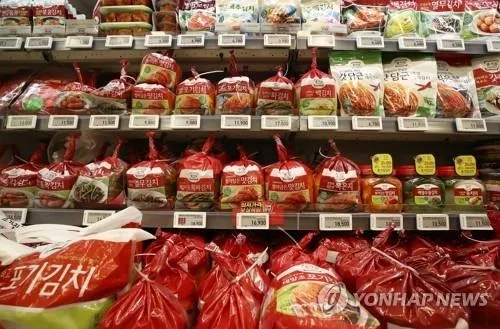What Factors Contributed to South Korea's 5% Rise in Agricultural and Food Exports This Year?

Synopsis
Key Takeaways
- South Korea's agricultural and food exports rose by 5% in 2025.
- Demand from the Middle East, EU, and North America was a major factor.
- Ramyeon exports surged by 21.7% during July-October.
- Ice cream and beverages also saw significant export growth.
- U.S. tariffs impacted exports to the United States.
Seoul, Nov 7 (NationPress) South Korea's exports of agricultural and food products saw a notable increase of 5 percent in the first ten months of 2025 compared to the previous year, fueled by strong demand from the Middle East, the European Union (EU), and North America, according to data released on Friday.
Outbound shipments of these products amounted to US$8.59 billion from January to October, up from $8.18 billion the prior year, as reported by the Ministry of Agriculture, Food and Rural Affairs, and covered by Yonhap news agency.
Shipments to the Middle East experienced a remarkable surge of 20.4 percent year-on-year during the ten-month span, with exports to the EU rising by 14.8 percent and to North America by 13.9 percent.
In the July-October timeframe, exports to the United States saw only a slight increase of 0.6 percent, likely due to rising U.S. tariffs, while shipments to the Middle East skyrocketed by 23.5 percent, thanks to high demand for Korean ice cream, beverages, and sauces, the data revealed.
Combined exports to China, Hong Kong, and Taiwan grew by 7.7 percent year-on-year over the four-month period, highlighted by a staggering 62.9 percent increase in the shipment of instant noodles, known as ramyeon in Korean.
Overall, ramyeon exports climbed 21.7 percent year-on-year, reaching $520 million during the July-October period.
Shipments of coffee products rose by 21.3 percent to $130 million, while kimchi exports increased by 6.4 percent.
Exports of grapes and ice cream also saw significant increases, soaring by 50.9 percent and 22.1 percent, respectively.
Meanwhile, South Korean stocks traded over 2 percent lower late Friday morning, as major tech shares mirrored losses from Wall Street, driven by concerns over an artificial intelligence (AI) bubble and employment issues.
The benchmark Korea Composite Stock Price Index (KOSPI) fell by 83.94 points, or 2.08 percent, to 3,942.51 as of 11:20 a.m.
Overnight, major U.S. indexes declined, reigniting fears over inflated valuations of AI stocks and revealing a cooling labor market.
The Dow Jones Industrial Average decreased by 0.84 percent, the tech-heavy Nasdaq composite dipped by 1.9 percent, and the S&P 500 dropped by 1.12 percent.








